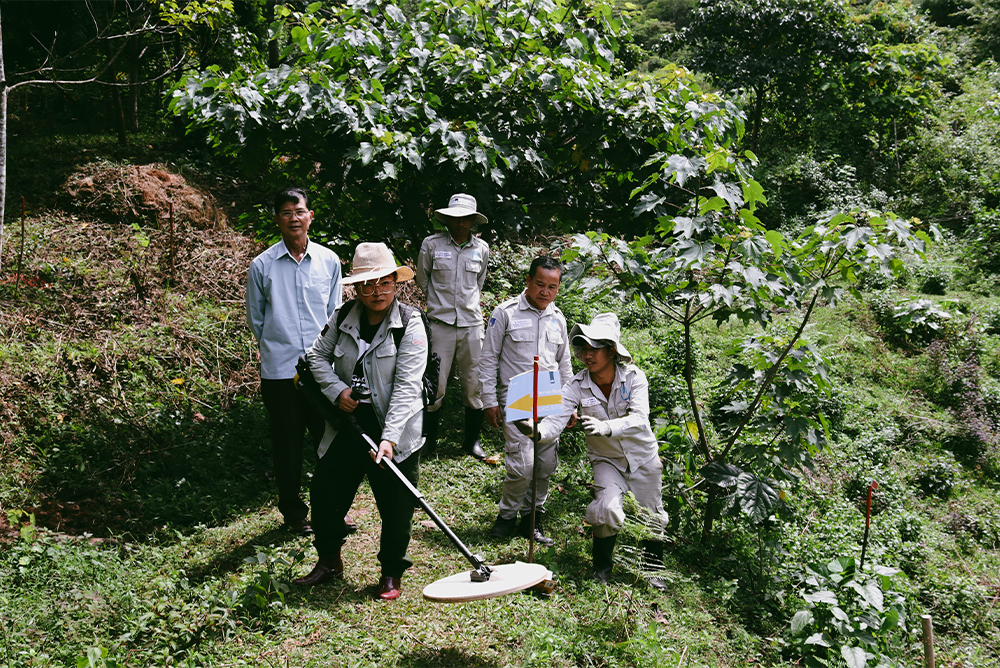
Legacies of War CEO Sera Koulabdara writes about the efforts to clean up unexploded ordnance (UXO) from America’s Secret War in Laos. Above, Koulabdara scans with a demining team in Houaphanh Province, Laos. Photo by Anna Phommachanthone. Courtesy of Legacies of War.
A horrific image haunts me: my father amputating a little girl’s leg to stop her from bleeding to death. The girl attended the same village school as my siblings and me. She was about my age, around 5. As blood flowed from her tiny body, my father’s snow-white lab coat turned bright crimson. The girl’s cries and her mother’s painful screams terrified me. I stood frozen, unable to turn away until my mother swept me to the safety of our home.
My father worked on countless victims of unexploded ordnance, or UXO—bombs that failed to detonate when they hit the ground—throughout Laos, Cambodia, and Vietnam in the 1970s and ’80s. My mother altered clothes for people who lost their limbs. My parents’ work resonates with my own efforts leading Legacies of War, an advocacy and educational organization addressing the long unfinished legacies of war in Laos.
Laos has earned the title of being the most heavily bombed country per capita in history. For nine straight years, from 1964 to 1973, Americans carried out 580,000 bombing missions in a country roughly the size of Oregon. The equivalent of a planeload of bombs dropped every eight minutes, 24 hours a day. This carpet-bombing campaign was all part of the U.S. effort to destroy the supply routes of the North Vietnamese troops along the Ho Chi Minh Trail, which runs the entire length of the border between Laos and Vietnam. Despite having signed the 1962 Geneva Accords, which promised Laos’ neutrality in the war, the U.S. and North Vietnam interfered in Laos’ sovereignty, using force to illegally enter the territory and “impairing the peace.” The violent interference was dubbed the American Secret War, and Laos was collateral damage.
Up to 30% of the bombs the U.S. dropped in Laos failed to detonate, leaving the landscape littered with 80 million UXO, and rendering the land dangerous and unusable. Fifty years have passed and, according to the National Regulatory Authority for UXO in Laos less than 10% of the contaminated areas in Laos have been cleared.
These UXO are war trash laying dormant—material reminders of a brutal time, waiting patiently, ready to be torn open once again, prolonging the conflict and its casualties. The twin efforts to clean up UXO, and to recognize crimes committed require us to hold on to the memory of this war and to remember better, more fully, more publicly.
At Legacies of War, we are working to ensure that the U.S. commits funds for bomb removal, victims’ assistance, and explosive ordnance risk education in Laos, Cambodia, and Vietnam. I meet with victims of ongoing UXO accidents and their families. Incidents have dropped from 300-plus in 2008 to fewer than 100 in 2023, but children remain the most vulnerable group, accounting for 60% of the victims in the past 10 years.
Last year, while visiting a demining site in Sepon, Laos, I met then-64-year-old Yong Kham. Most of his childhood was spent in muddy, foul trenches or dark caves, trying to avoid death. During one bombing raid, a cluster bomb exploded nearby. Yong Kham survived, but two of his siblings died right before his eyes.
Decades later, in 2003, his eldest son, 21-year-old Tong Dum, was killed when he came across a UXO while collecting wood and scraps. I asked Yong Kham why he wanted to share his story with me. “I don’t want it to happen again,” he told me. “No country should have to suffer from these bombs.”
Many visitors to Laos today are oblivious to the pains of its past. They notice only the warmth of its people, the pristine beauty of its waterfalls, and stunning sunsets along the Mekong River. But the wounds of war are hidden in plain sight—giant bomb craters, damaged historical sites, environmental contamination, cruel family separations and displacements, and thousands of injured victims. Trauma prevents survivors from speaking out.
Demining work is tedious, dangerous, and expensive. Terrain, weather conditions, equipment, methodology, number of teams required, and other factors make costs uncertain. Funding for UXO clearance is also unpredictable, hindering planning, development, and talent retention, and further compounding the difficulty of the work.
I visited Humanity and Inclusion’s demining operation in Houaphan Province in August. Houaphan is green, wild, and full of mountains and endless hills. To get to the demining site, my team and I drove for 3.5 hours on a bumpy road with breathtaking views of the countryside. We saw villages with cows, goats, and other animals freely roaming.
At the clearance site, a team leader conducted a safety briefing and told us about the families living in the area, what types of UXO were there, and the intended use for the land once it’s cleared. We hiked up a steep hill with tall grass and trees. I got to test out the demining team’s scanner, used to detect metal—and which weighs 5 pounds. Each deminer carries a scanner, a shovel, and a bucket all day. This is tough work that’s made only more challenging by the heat of Laos’ generous sun.
The work of memory and awareness goes hand in hand with the on-the-ground work of demining. Growing up in a family that fled Laos for the U.S. when I was just 6, I, like many Americans, did not know much about the U.S.’ Secret War, nor its direct impact on the people of Laos. But refugees from the country fled to America then, years after the war, and will likely continue to arrive here or other places for decades to come. To tell this story, we launched our Legacies Library initiative, compiling a list of books, films, articles, and oral histories of the bombing. Remembering the war empowers us, and serves as a reminder against violence.
In 1994, the U.S. released bombing data that helped make survey and demining work more efficient. To date, it is the largest funder of UXO clearance efforts in Laos, contributing $45 million in 2022. Yet this is a minimal investment compared to the $65 million price tag of just one B-52 bomber, the plane used to fly bombing missions. The U.S. needs to show it is committed to funding UXO cleanup, supporting victims, and preventing further harm. With multi-decade funding, the U.S. could help Laos become UXO impact-free, and assist an estimated 25,000 survivors.
The Biden administration’s recent decision to send cluster munitions to Ukraine shows the difficulty the nation has learning lessons from its own history. The U.S. could—and should—accede to the Convention on Cluster Munitions, an international treaty that bans the production, use, transfer, and stockpile of cluster munitions. Thus far, 123 countries have adopted the treaty, including Germany and Canada. Our policy should be more aligned with our NATO allies than with Vladimir Putin’s Russia, another country that has not signed on.
As we mark 50 years of suffering caused by America’s Secret War in Laos, many who lived through it, including my 98-year-old grandmother, are getting older. They deserve closure, and to see justice served—America cleaning up all of its mess. They cannot wait another 50 years.




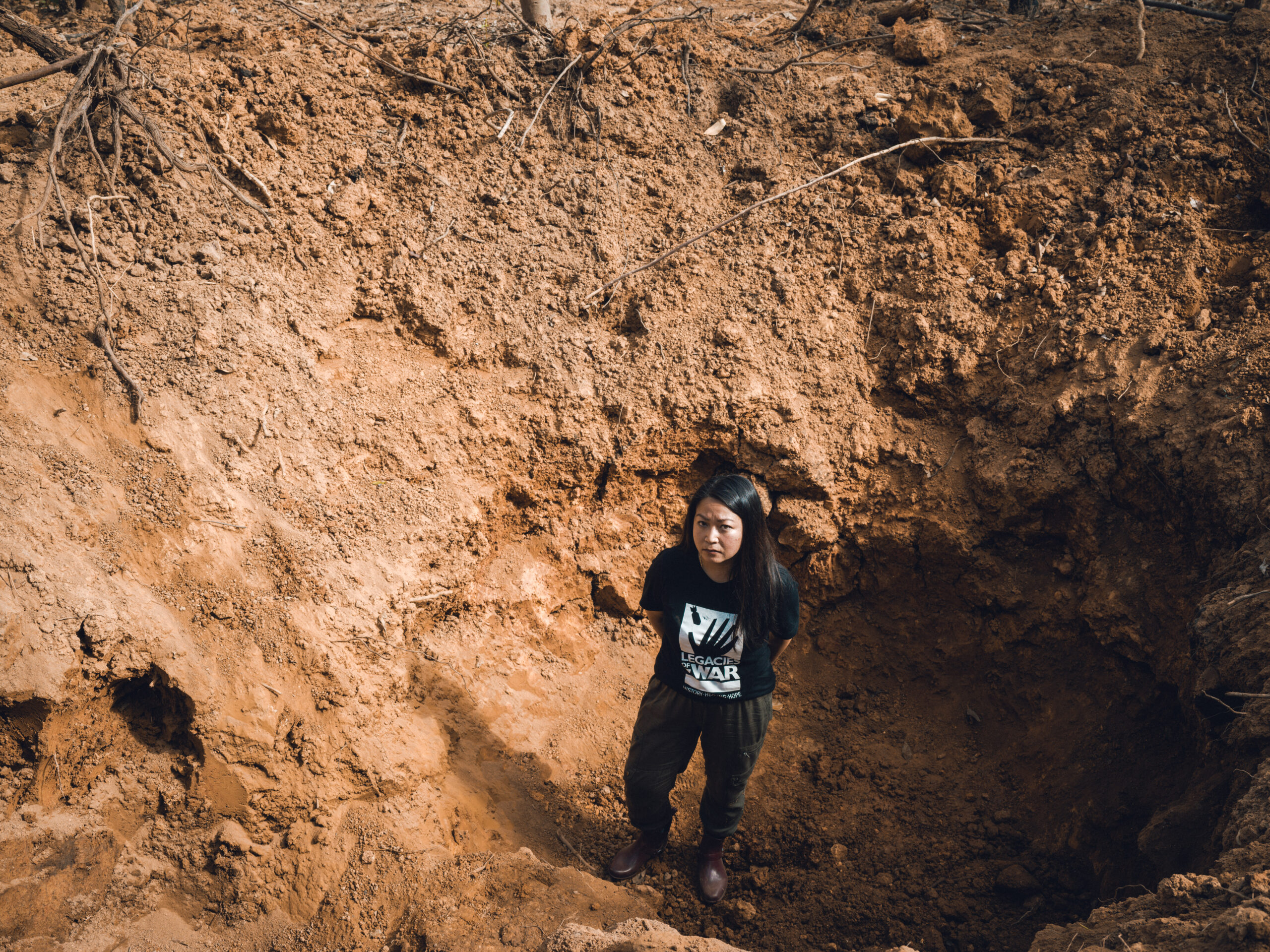
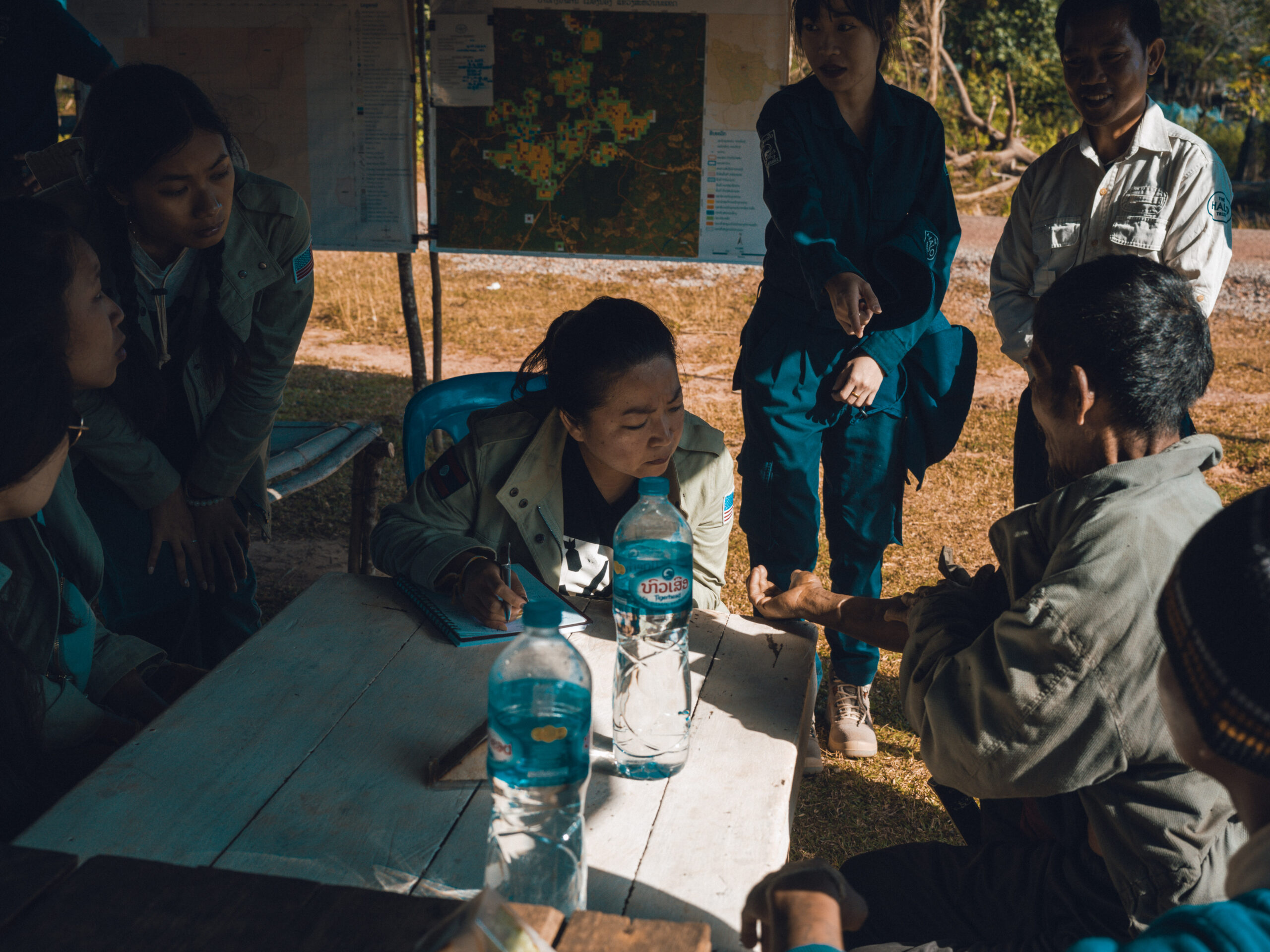
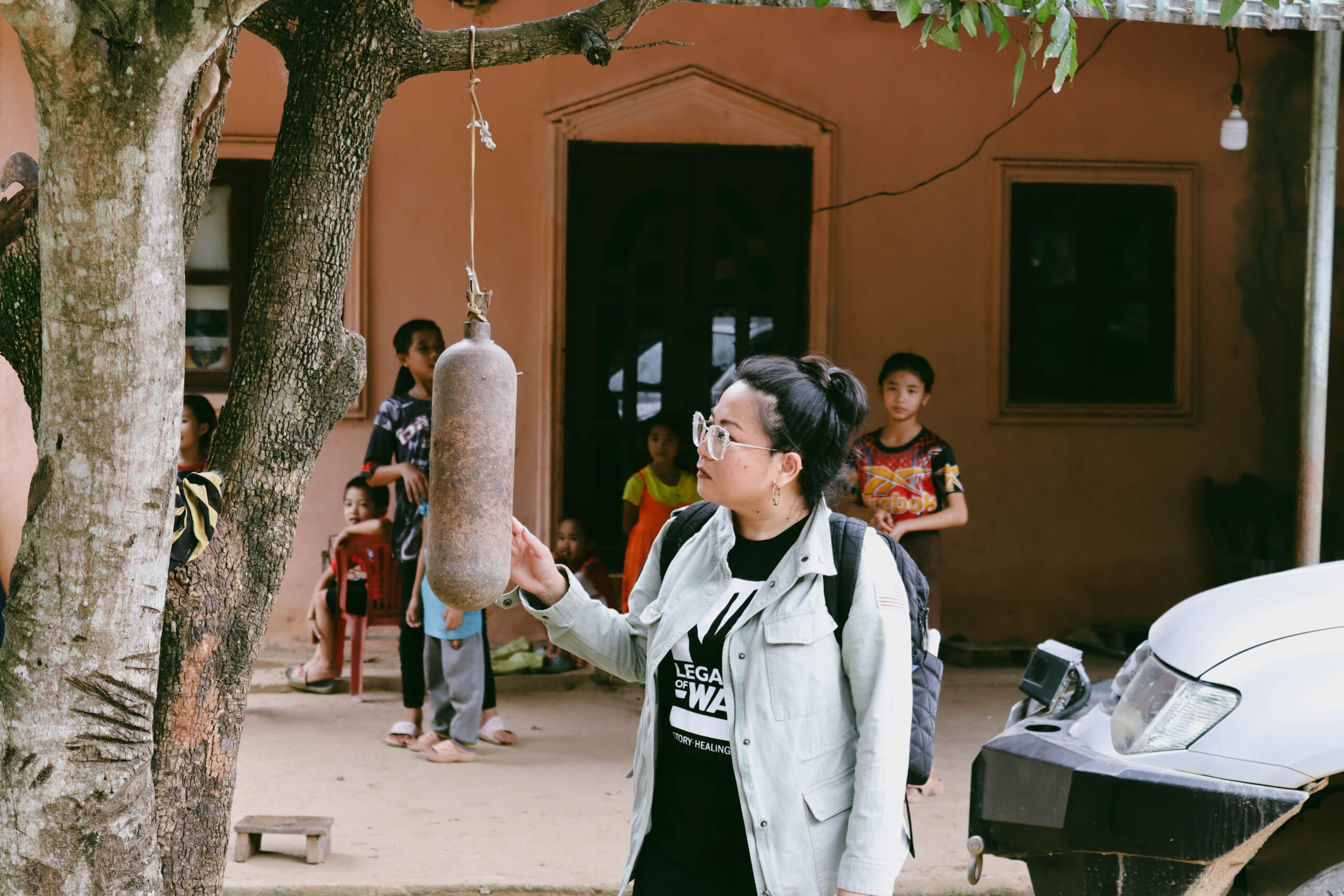
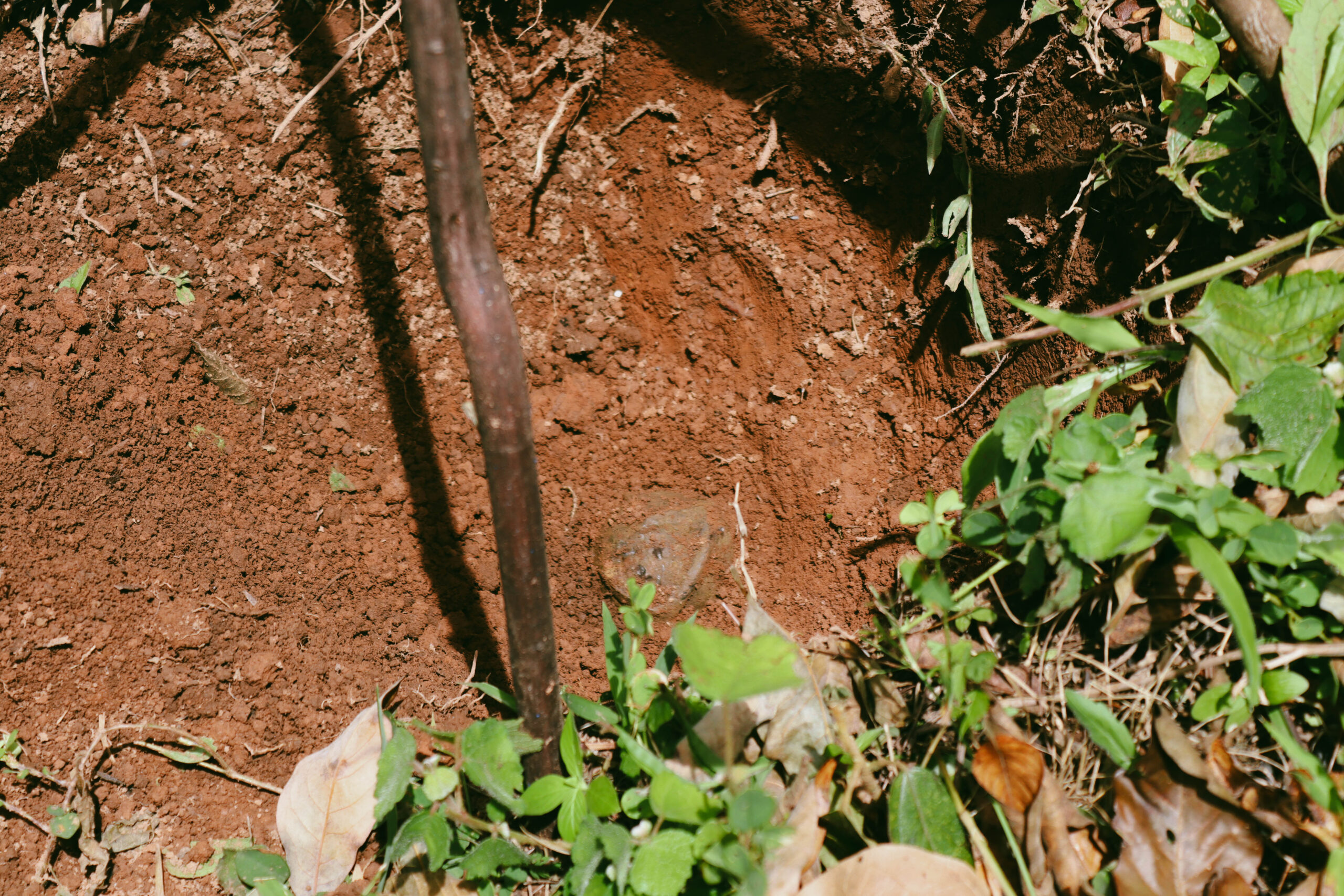
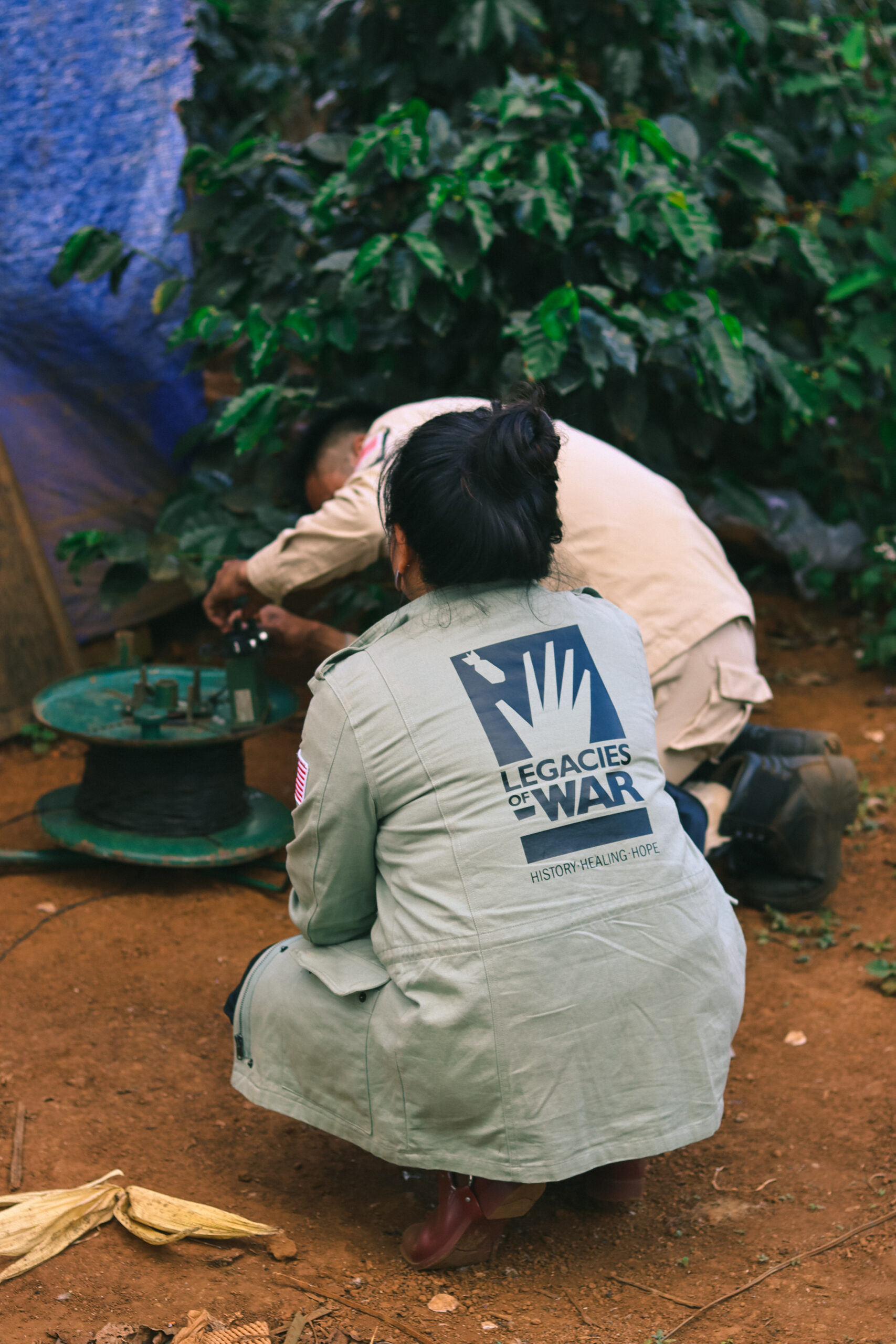
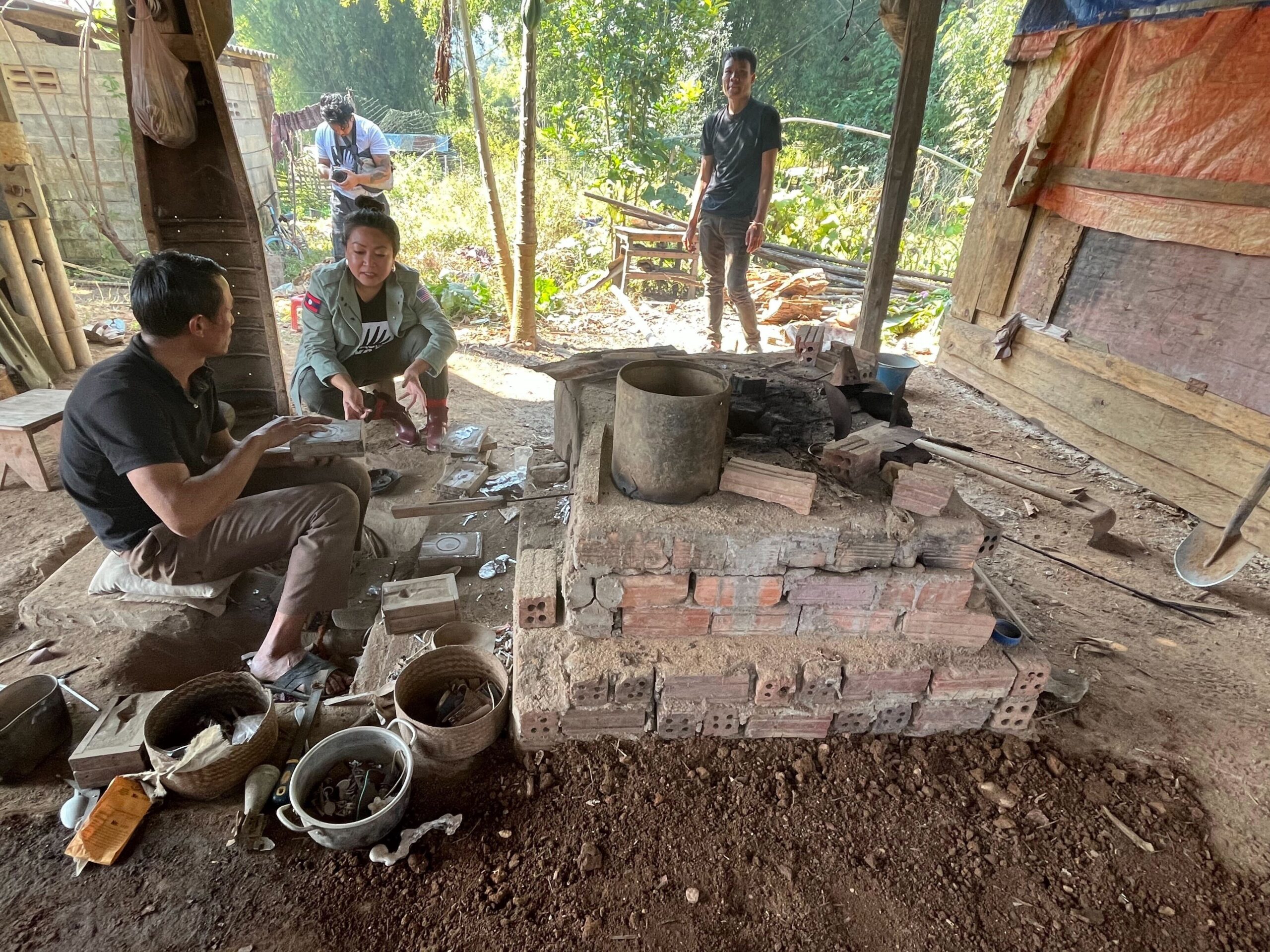
Send A Letter To the Editors